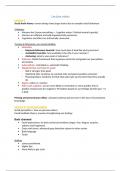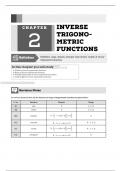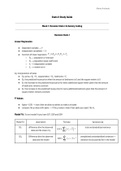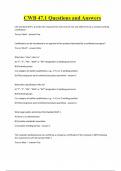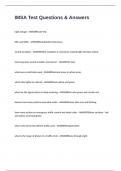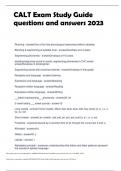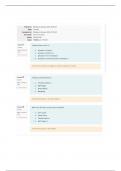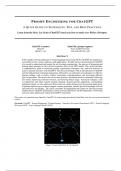〜Changes in matter〜
3 types of changes:
⟶ physical change
⟶ chemical change
⟶ nuclear transformations
Physical change: molecules dont change. New substance is not formed.
Chemical change: molecules change. New substance is formed
Physical change Chemical change
Size/shape change Altered molecules
Phase (liquid, solid) Gas formed
change
Density change Aroma, colour change
Texture change Precipitate formed
Color change Energy released or
absorbed
Chemical equations: chemical changes or chemical reactions, can be represented with chemical
equations.
Reactants + Products
↓ ↓
2Ag + H2S ⟶ Ag2S + H2
*always put the phase for each element*
S- solid
L- liquid
G- gas
Aq- aqueous
, Law of conservation of Mass
⟶ In a chem rxn matter is neither created nor destroyed.
⟶ The number and type of atoms going into a rxn must be the same as the number and type of
atoms released.
⟶ If an equation obeys the law of conservation, it is balanced.
Diatomic molecules
I Have No Bright Or Clever Friends
I2, H2, N2, Br2, O2, Cl2, F2
Nomenclature review:
Is there a metal?
↓ ↓
Yes No
↓ ↓
Ionic bond covalent bond
Ionic bond:
⟶ N.metal + metal
⟶ Name first element+name metal first
⟶ If you have a polyatomic ion, name it otherwise name the second element -ide
Covalent bond:
⟶ n.metal + n.metal
⟶ name first element + prefix
⟶ name 2nd + prefix -ide

